10 Ways to Make Your House Less Cluttered

10 Ways to Make Your House Less Cluttered
Parenting can feel like swimming through a pool of legos, orphaned dirty socks, and discarded craft supplies. Here's to a house that looks like grownups live there.
Written by Liz Bayardelle, PhD | See Comments | Updated 03/30/2021
Want to cut to the chase?
Repeating Item Cleaning Plan
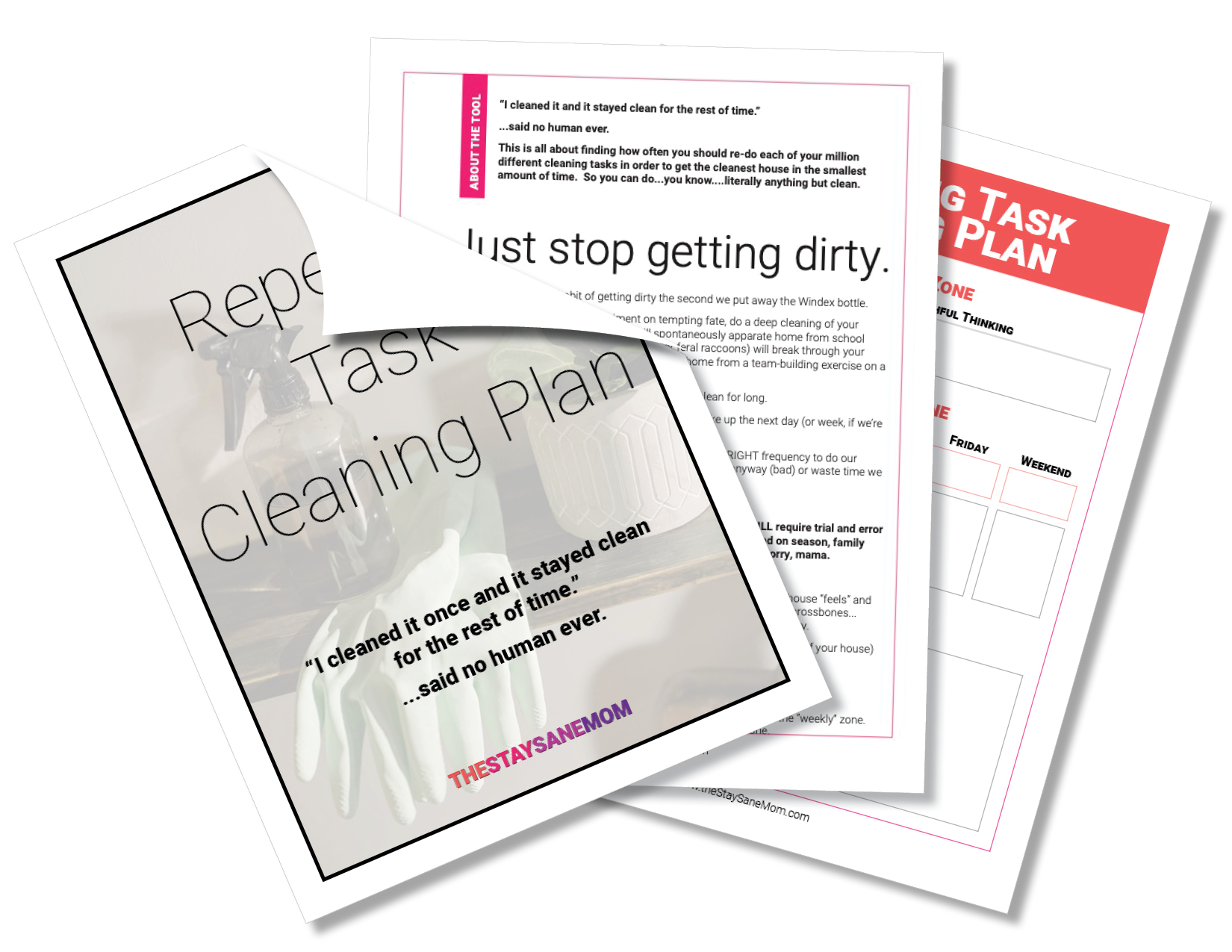
10 Ways to Make Your House Less Cluttered
This post contains some affiliate links for your convenience. Click here to read my full disclosure policy.
Ahhh, motherhood, thy name is clutter.
Why am I surrounded in baby booties? And why do only two sets out of 100 come with a left foot? How did you get so many blocks? Like, are there even this many blocks in the universe? Why do you have so many Legos? Do we really need to keep the toilet paper tube binoculars? (Yes, we really really do, apparently.) Why are your clothes everywhere? Why does nothing stay in its proper location for more than two seconds? Where is the floor? I swear we had a floor under all this crap! And why is everything so sticky?!?!?!?
Yes, mama. I know you know the song. You've been singing it for years. And you're not alone.
Why All the Clutter?
The short answer is that kids are hedonistic little jackwagons with undeveloped brains and little appreciation for the finer things in life (like being able to see your kitchen counter or get to your bed without wading through a veritable obstacle course of dirty laundry and discarded sports equipment).
The even shorter answer is "people".
You no longer have the luxury of only cleaning up the messes you make. You now have at least three people (yourself, your spouse, and at least one tiny hellion) to clean up after, and most of you probably have more, whether due to siblings, relatives, or a never-ending stream of kids' friends parading through your house like a foster home for wayward whatevers.
People make your house messy, and it's your happy job to clean it all up and (even harder) to keep it (mostly) clean on a regualr basis.
Yes, it will certainly brighten things up to get things off the floor and out of sight before important company comes over, but you really want the house clean for you, not for other people.
So how do you do it? How do you keep your house decluttered, even with kids? First of all, let's make one important distinction...
What Is Dirty? Not Clean or Not Organized
This is something a lot of people don't distinguish, and it can cause a lot of difficulty when it comes to troubleshooting what's giving your house that "ick" feeling.
Dirty as in "Not Clean"
If a house is dirty in the sense that it's not clean, it means there are dust bunnies everywhere, things are sticky (that should definitely not be sticky), there's mold in the shower, there's dog smell in the carpet (or dog drool on the walls, in my case), or some novel combination of the above.
If you feel like your house is in pretty good shape from an organization front, but you have a problem with it not being clean, this isn't the article for you. This article is about some good old-fashioned disorder (see below).
If you need help with the cleaning aspect of a dirty house, here are some resources you may find very useful:
- A guide for how to deep clean your kitchen and a printable kitchen cleaning checklist
- A list of often-forgotten items that need deep cleaning in your house
- A printable deep cleaning checklist you can use for literally any room in the house
- A how-to guide for cleaning a garage
- A free workbook to help you develop a regular cleaning plan
So if you think clutter isn't actually your problem as much as dust, grime, and other yuck, those should get you exactly where you need to go.
If your house is plenty sanitary, but really just feels like it's overflowing with crap, read on...
Dirty as in "Not Organized"
When you say your house is dirty as in it isn't organized, you mean that you are drowning in nouns.
There are things everywhere. Your countertops are a mess, the playroom is overflowing with toys, your desk has long-since disappeared under a pile of paperwork, and you can hear Marie Kondo laughing at you all the way from LA.
Yes, you can temporarily get rid of any large or sentimental items that are in your way by renting a storage locker. (If you use a PODS coupon you can get less expensive storage, by the way.) However, that's not going to help you keep clean on a daily basis. Most likely if you put some stuff in storage and you don't change your day-to-day habits it would be like putting a bandaid on a wound without getting stitches first. It'll just temporarily cover up the problem and you'll be back to your current situation again in no time.
So something has to change, but what? How do you actually defeat clutter without selling your kids on Etsy? (Not ebay. See below meme.)

How to Get Your House Clutter-Free?
If your house is currently an eye-roll-generating, shiver-inducing, close your eyes and don't take off your shoes pigsty, the first thing you have to do is get it clean and clutter-free in the first place.
How do you do declutter?
Unfortunately, the answer is usually "with a crapton of really hard work".
I can't go into every scenario in one article (and keep it under 193,472 pages single spaced), so I'll give you one technique that has never failed me: the priority-driven pile o'stuff.
The Priority-Driven Pile o'Stuff (Patent Pending)
When it comes to organizing I will often use the same basic procedure regardless of what needs organizing. This is an old standby that I have used since my mom forced it upon me in childhood, but since I have become responsible for my own mess I have realized just how was she indeed was.
I refer to this organizational strategy (affectionately, of course) as the Priority Driven Pile o’Stuff. There are four basic steps.
Step 1: Create the Pile
Step one is to take literally everything out of (or off of) the location you are trying to organize and put it in one giant pile in the middle of the floor. At this point you can wipe down or clean all empty surfaces with relative ease, because there should be literally nothing on or in them.
Step 2: Sort the Pile
Step two is to rearrange your giant stuff pile into some semblance of categorization. If you're organizing the kitchen, this means that water bottles go with other water bottles, dishes go with other dishes, and so on. Basically, you should transform one giant pile of mess into several, smaller, categorized piles of mess.
Step 3: Begin Rehoming Items In Order of Priority
Step three is to slowly replace objects in their rightful homes, beginning with the most important object (or categorical pile of objects) first. As you put things back, put them where it is most logical for them to live, even if it wasn't where they were before.
The most important part here is that you start with the most important object first. You put this most important object in the pile back where it naturally and logically wants to live, then you look for the second object in your priority list. This should be relatively easy because it means that every time you're taking something out of the pile it should be the thing you care about most in the pile.
This is essential because we often to get large amounts of space to the things that take up the most room or are the most fun to put away or some other any concern. By rehoming your Pile in order of priority, you're making sure that you're giving Prime real estate to the things that actually matter, not the things you found first when you unpack your moving boxes way back when.
As you put things back, think about a few different considerations.
Where does the object make most sense?
This one comes in handy is one deciding which room and object belongs in. Usually it's pretty obvious where things go, but there are a couple Majestic occasions in which house has somehow Miss sort objects into the wrong room. We keep it wherever it was, because that's where it's always been, but if you actually take a minute to think about it some things truly do belong somewhere other than where we have been storing them.
Don't be afraid to move objects into a different room, even if it's not where you used to seeing them. Sometimes a change like this can make a huge difference in the feel of your house.
We recently moved all our craft supplies from a cramped cabinet upstairs to the closet of our infrequently used guest room and it seriously felt like we moved into a different house. We had all the space in the world all the sudden!
Don't be afraid to think outside the box. You can always move it back if you don't like it.
Where do you usually need to use the object?
Generally, you want things to be closest to where you need to use them. For example, coffee mugs should be in a cabinet within arm's reach of the coffee maker. This is usually somewhere close to the fridge (where creamer or milk have to live) and not too far from the silverware (for stirring spoons). By keeping utility in mind when you organize a room, you can make your day-to-day routine so much easier.
How often do you use it?
These should be the largest determining factor where in the room it makes sense to put something. You want the things That are used most frequently to be the most easy to reach. Things that only get used seasonally or every so often can go in drawers or harder to reach cabinets, but you want the things that get used on a daily basis to be stored front and center in the most prominent drawers, the front of cabinets, or even (sparingly) on counters themselves.
This last consideration is why the priority-driven pile of crap is such a reliable approach. When everything is emptied out, and all the things that are going in a certain room are simultaneously visible in one giant pile, it is easier to see what the most important items are and to give them their homes first.
Step 4: Stop Rehoming Items Before the Pile Runs Out
Step four requires a little bit of introspection.
I think we can all agree on the fact that every room in your house probably has at least one item which is better off being donated to Goodwill than continuing to be stored in your house.
(I know in my case it's more than one item per room, but one seems to be a good minimum across the board.)
Assuming that each room has at least one item which you should donate to Goodwill, this means that at some point in your pile you will reach a point where you put away the last item that actually matters to you and the rest of the pile becomes a “to donate” pile.
This is always hard to do. We innately resist giving things away because we feel wasteful giving away things we might have bought recently, we think of times when we technically could still use the object, we don't want to feel like we have that much stuff to begin with, or a plethora of other reasons.
Whatever the reason, I'm a huge believer in frequent donations. Houses get cluttered really fast and nothing can make your walls start to close in more than objects you don't really need.
Obviously, this is a judgment call, but if you need a hard-and-fast rule you can set a time limit in which an object must be used. For instance, if you say one here, you “have to” donate anything that you have not used in the last 365 days. I generally go with 3 or 6 months in our house, with an obvious loophole for seasonal items, but a year is a very conservative rule if you want to err more on the cautious side.
So getting back to step four, sometime before you reach the last item, you get to the point where your pile stops going back on the shelves and starts going into the Goodwill bag. This is a good mental exercise because, as we agreed upon before, each room has at least one item you probably don't need. By ensuring at least one item gets donated, you're getting yourself in the mindset of “ do I really need this?” rather than just mindlessly putting things back on the shelf.
The End Result
The end result of the priority-driven pile of stuff is a completely reorganized room. While the stuff was in the pile, the underlying surfaces got a nice deep cleaning, and then everything got rehomed in a logical and priority-driven way.
Hopefully, this will leave your room in a much happier state than where you found it.
Categories of things go together, so all your water bottles live together, all your t-shirts are in the same place, and you know exactly where to find your massive pile of highlighters.
Finally, it gave you an easy way to pull out the items you don't use anymore that needed to be donated, so your room should feel a little bit less cluttered as well.
How to Keep Your House Clutter-Free?
This one is a little bit harder because it involves consistency.
It's all well and good to go on a giant rage-cleaning binge one weekend when the spousal unit takes the kiddos out of town, but it's another thing entirely to find a way to keep your clutter at bay through all the late-night catastrophes, playdates, impromptu rainy day lego sessions, and just the normal havoc that a family with kids wreaks on their everyday environment on a daily basis.
Step 1: Recruit the Minions
One of the most important things is to teach your kids to help keep things clean. Seriously, there is no way for one human being to clean up after a whole group of people's messes and still have time to do other things (like breathe, sleep, and eat...for example).
There truly is no sustainable clutter solution without a little help from others or a little dog training *cough* I mean human training on your part.
Step 2: Use the Two Minute Rule
After that, I'm a firm believer in the two minute rule.
I write about this a lot, especially when it comes to keeping your house clean and making life in general less irritatingly impossible. The basic crux of the two minute rule is this:
If it takes less than two minutes to do something, do it the second you notice it needs to be done.
A lot of clutter is in the form of piles to be done. This crap needs cleaning, that crap needs to be put in the attic, this junk is bills that need paying, those books need to be put on a shelf somewhere, these toys need to be tossed in a chest (or into the fires of Mount Doom, if they have glitter or make loud noises).
The two minute rule cuts down on that because it forces you to do stuff right away, rather than let stuff hang out long enough to feel cluttered.
Step 3: Troubleshoot Your Laziness
Figure out where clutter usually hangs out and make it harder to do so.
Do things tend to overflow in a certain junk drawer? Great! Take everything out, put a really nice organizer in there that makes it physically impossible for anything larger than a pen, checkbook, or roll of stamps to fit. It'll suck for a bit, but you won't be able to use it as a catch-all anymore.
This isn't always the easiest to engineer, but sometimes we have systems in place that promote clutter. Take a deep, introspective look at your house and figure out 1) where your most cluttered places are and 2) if you have a system or habit in place that's making the clutter worst.
Step 4: Redirect the River
Remember that old parable about how it's impossible to stop the flow of a river, but if you simply put rocks in the way you can quite easily redirect the way the water flows?
Your clutter is the river. Your family (and by extension all your stuff) is going to go in the place that's easiest to put it. People are lazy like that. The way to beat clutter on a permanent basis is to make it easier to put things in the right place than the wrong one.
Create systems that make it easy to put toys in the proper bin, to throw bills in the "to be paid" magazine file rather than on the counter or in an overcrowded desk drawer, or to put clothes in the hamper instead of on the floor.
Step 5: Think of it Like Potty Training
Metaphorically speaking, you may have to temporarily put a kiddie toilet in that corner where the toddler always hides to go poop.
By this, I mean if clothes are always thrown in one corner of your son's room, put the hamper there to start off. Once the clothes go in the hamper rather than on the floor (because it takes exactly the same amount of effort to throw clothes in a hamper as on the floor if they're in the exact same place), start moving the hamper towards the closet (or wherever you want it to eventually live) one foot each week.
Yes, I literally do this. I will move a toy box or hamper slowly across a room like I'm filming the weirdest claymation movie ever. You move it one foot each week, and the clothes still get put in the hamper (or the toys in the bin), because you're not training a new habit, you're just slowly molding an old one.
For those of you with psych backgrounds, think Skinner's pigeons, but your kids are the ones pecking the button.
Step 6: Optimize the Rooms Against Clutter
Once you've taken care of the basics of clutter (i.e. the giant mountains of garbage, laundry, and/or toys have been mostly disposed of) you can start optimizing your space for a life that's less cluttered in the long haul.
This can mean many things, but here's a list of my favorite anti-clutter warfare tactics.
- Aim for empty counters. The more you have on a space, the more other items are going to creep in. If you have a completely empty space (a counter, floor, desk, etc.) people are less likely to be the first one to junk it up. (If you don't believe me, read my article here on what 1980's criminology and house organization have in common.) Don't let things live permanently on your counters. Clear your desk completely every night. Never let your kids leave a room with anything on the floor. Once you set the system up, it will self-maintain easier.
- Utilize categorized throw boxes. This is our household's bread and butter. Use a group of matching, labeled bins to house things. If it's toys, there should be boxes that say "things with wheels", "things that bounce", "board games", or whatever categories work for you. Your kids can still throw things in a pile, it's just a pile inside a pretty box with a logical theme to it. Win win.
- Things only get one home (and that home makes sense). If things can "live" in more than one place, people get choices. People are BAD at choices. Make it easy. Everything only has one home. If keys aren't in your hand, they're on the hook by the door. Any toy you aren't currently using goes in the toy bin. Any clean clothes not on your back are hanging in your closet. Any dirty clothes are in the hamper. All mail goes in this box. Don't make people think about where to put something, because they will think badly, stupidly, and wrong....as all humans do.
- Regularly go through everything with an eye for donations. We buy too much crap. As a species. You shop when you're sad, when you need stuff, when you feel like shopping but don't need stuff, when your kids have birthdays, when you want to get out of the house....but think of that never-ending stream of things coming into your house. Actually, you might not want to think about it too much because it's actually kind of freaky (or miraculous we haven't all drowned in our own junk yet). Try to keep your flow of items out as steady as your flow of new items in. Give away old clothes, regularly cull out toys your kids have outgrown, scan and shred papers you think you need to save but really don't, and please for all that is good and holy get rid of that drawer of takeout menus. If you regularly look around thinking "do I really need this anymore?" your clutter will go away much faster.
Overall, clutter is a perpetual battle.
It isn't easy, but it is possible to live in a house that doesn't feel like it's slowly filling up with crap. Just try to think about what the simplest way to house things is, whether you actually need any given item, and how people are naturally going to "want" to put things away. You'll vanquish that cluttermonster once and for all.
Start Your Next Step
Repeating Item Cleaning Plan

Get Sanity, Delivered to Your Inbox.
Care to Share?
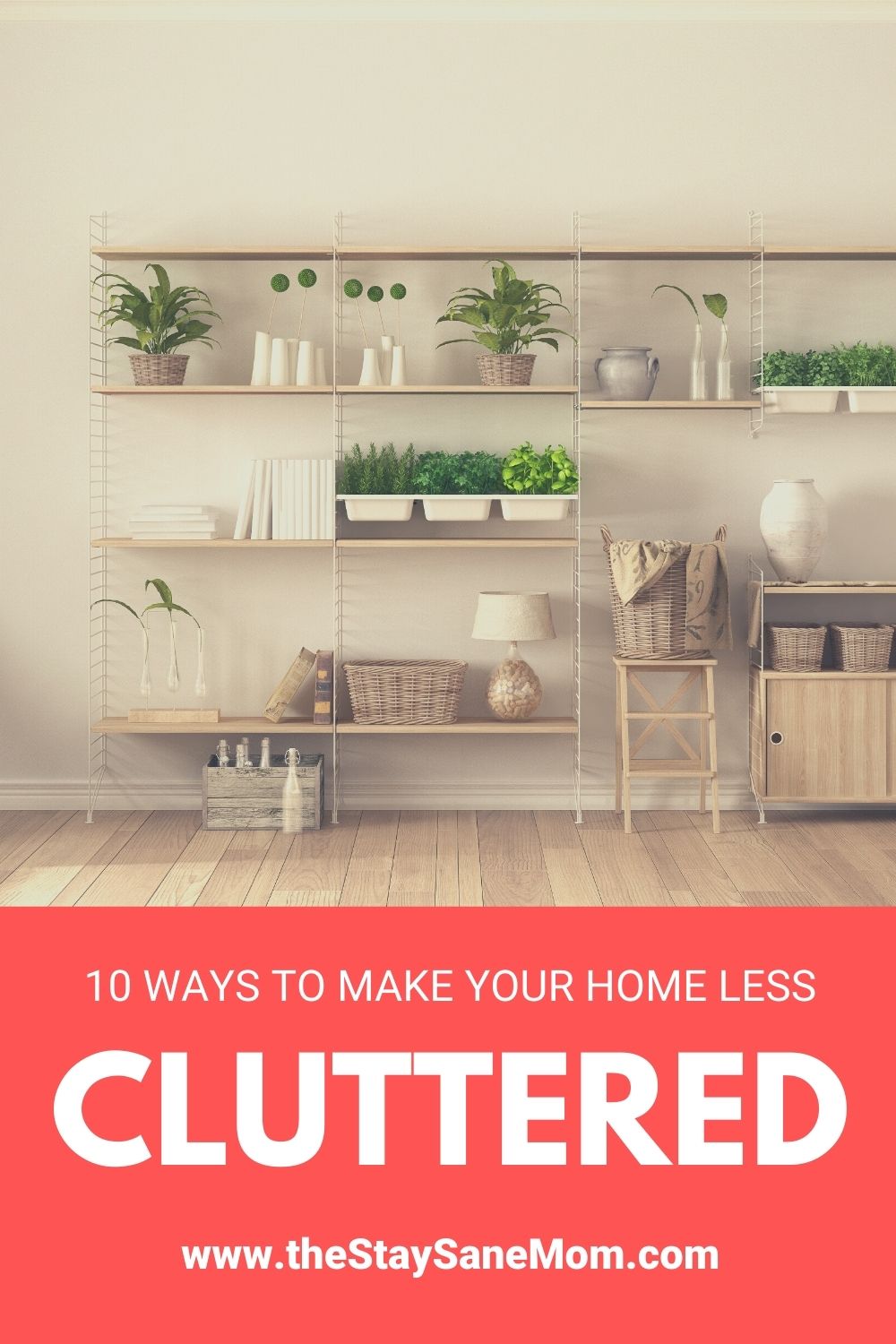
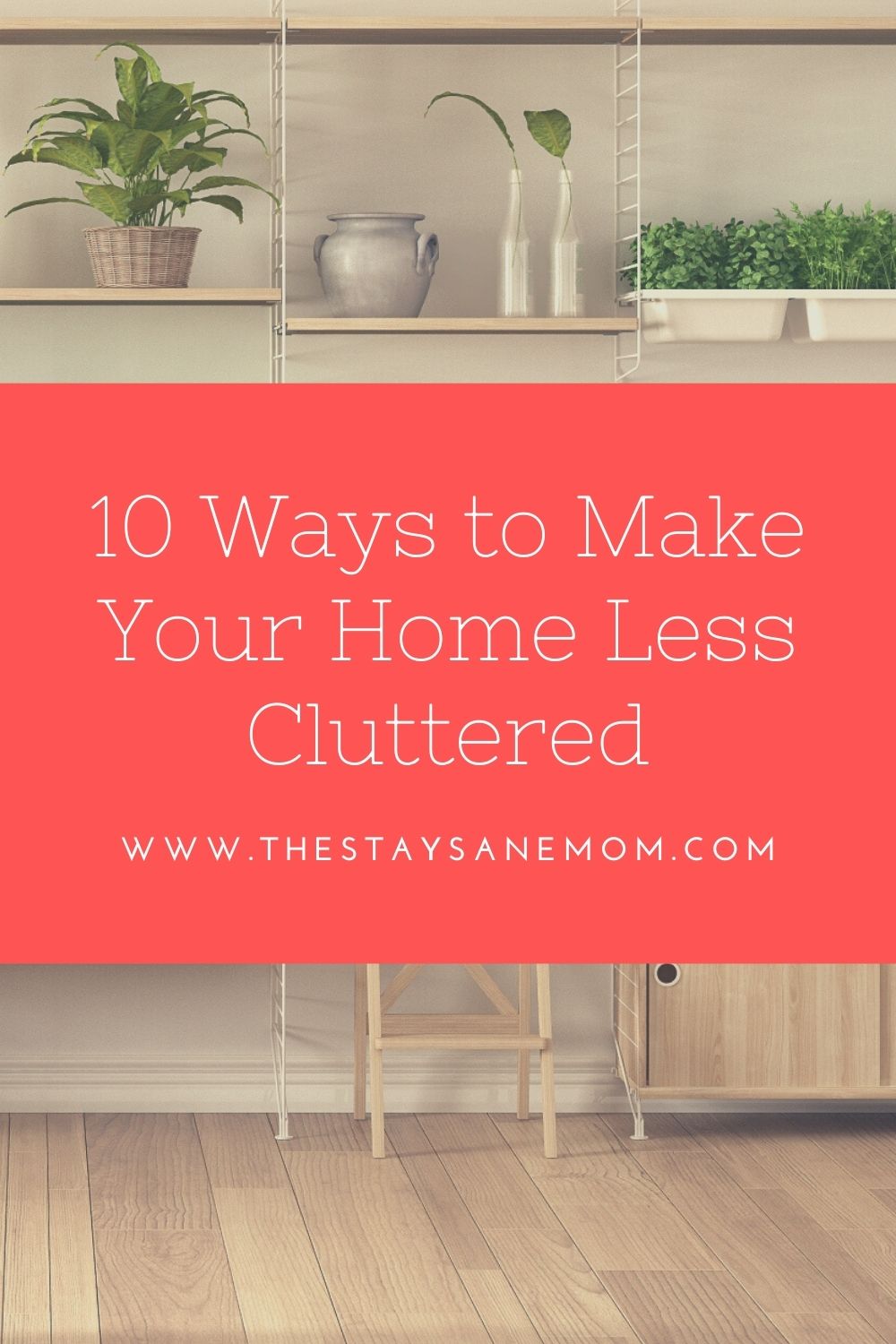
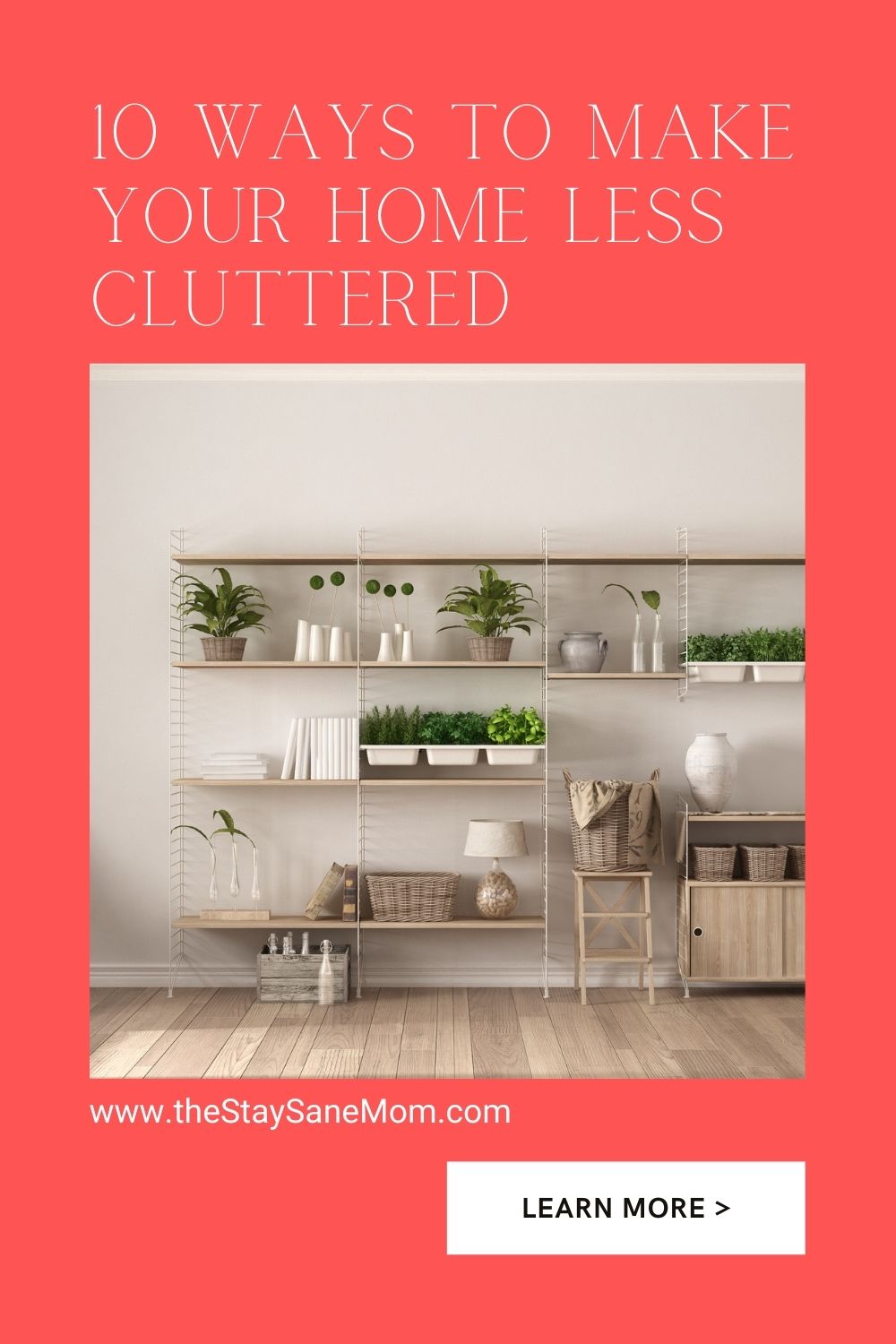
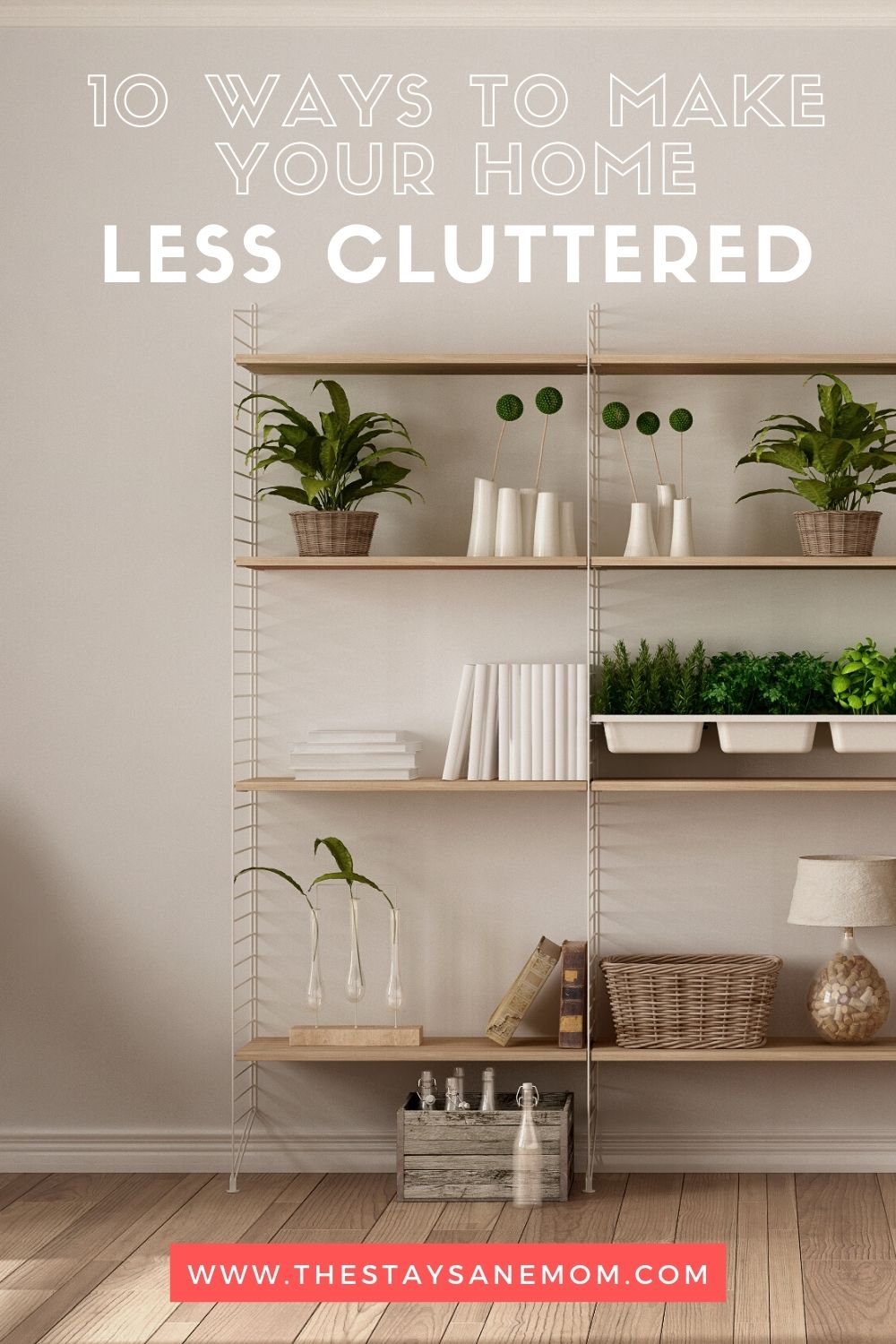
About the Author

Liz Bayardelle, PhD
Founder | Contributor
Liz (or Dr. Mommy, as her toddler started calling her after learning what a PhD was) is the happily sleep-deprived mom of a toddler (and professional raccoon noise impersonator), a sparkle-clad kidnado, a teenage stepdaughter, 200 cumulative pounds of dog, and herd of dustbunnies (if daily vacuuming doesn't occur). During nights and naptimes, she uses her PhD in business psychology as an author, speaker, and consultant. She also serves as an executive and principal for three companies, two of which she co-founded with her very patient (and equally exhausted) husband.





-Budget.jpg)